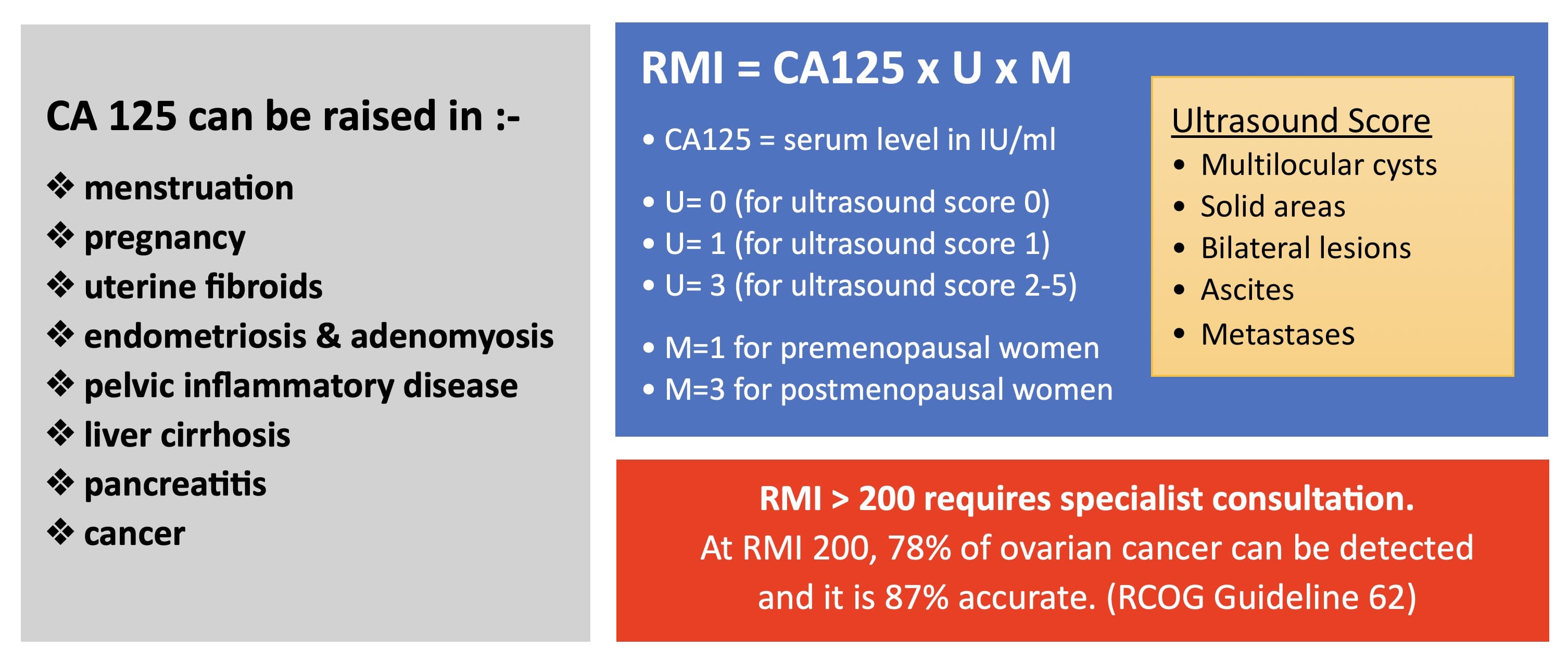Ovarian Cysts
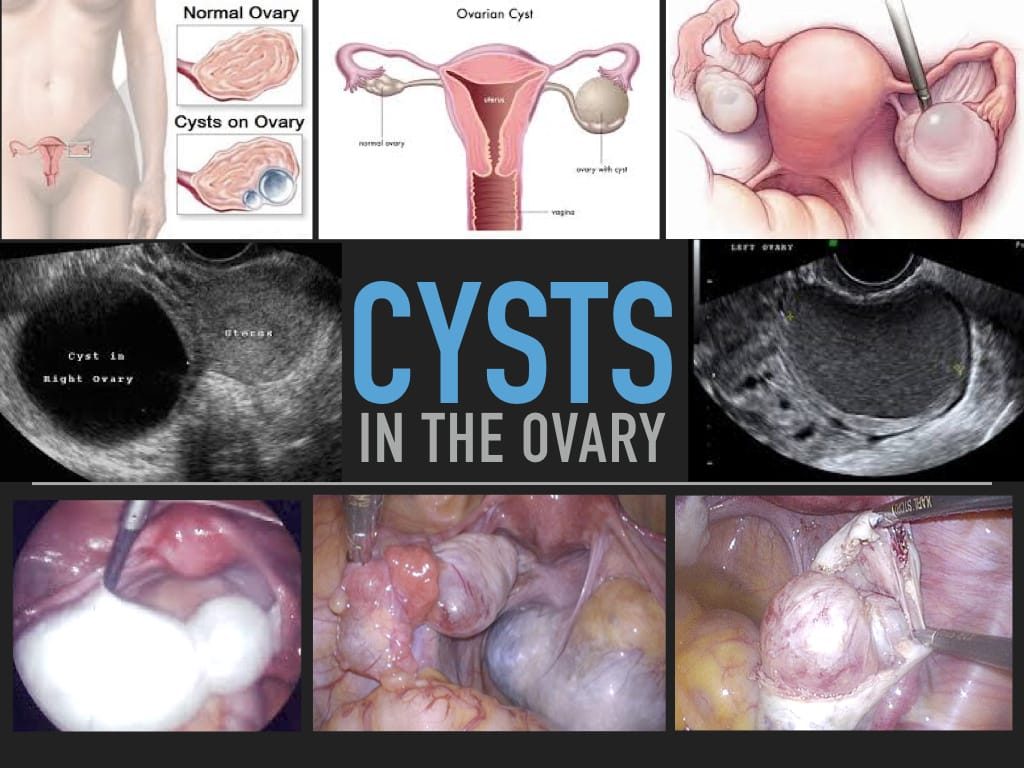
Ovarian Cyst is a sac of fluid or tissue formed within the ovary
It is normal to have an ovarian cyst each month before menstruation.
This functinal ovarian cyst is called the Corpus Luteal Cyst. It will go away after menstruation. Click here for menstruation cyst diagram.
Common Types Of Ovarian Cysts
"Water Cyst" or Functional ovarian cysts are the most common cyst in the reproductive age. They contain only fluid or blood and usually resolve in a month or two. They are usually less than 5cm although rarely they may be as large as 8cm.
"Blood Cyst" or Endometriomas (or chocolate cysts) are formed by Endometriosis where the womb lining is found outside the uterus leading to monthly bleeding in the pelvis. This sometimes forms blood cysts within the ovary and leads to painful menstruation or pelvic pain.
"Tissue Cyst" or Dermoid cyst (or benign mature cystic teratomas) usually contains oil and hair. Dermoid Cyst form because the ovary has cells with the potential to develop into any type of tissue. Hence, these cysts can also contain skin, fat, bone and cartilage. Dermoid cyst can happen in both ovaries in 10% of the time.
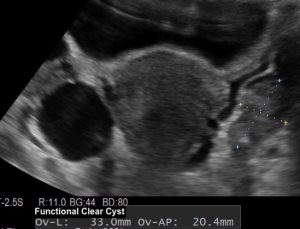 |  |  |
| Water Cyst | Blood Cyst | Tissue Cyst |
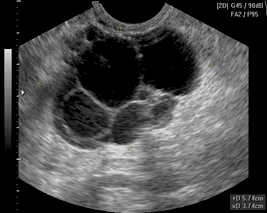 | 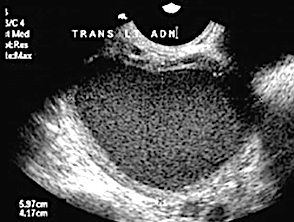 |  |
Ovary Cyst Size and Volume
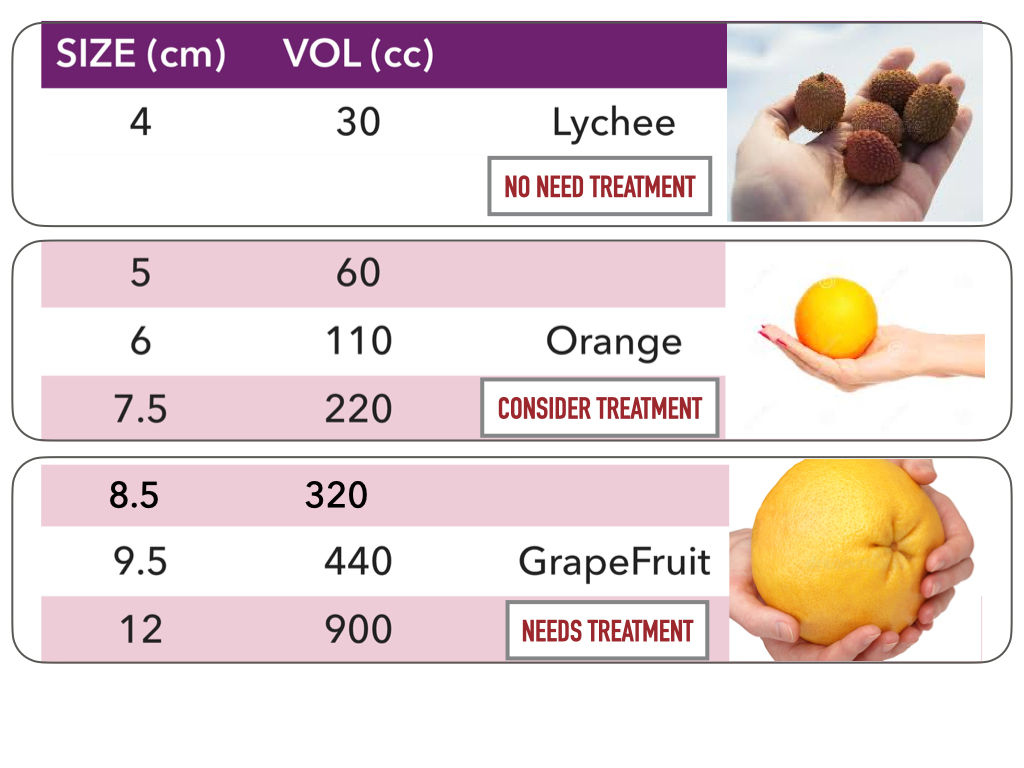
Symptoms of Ovarian Cysts
Most ovarian cysts cause no symptoms because they are small and non-cancerous.
Some ovarian cysts may cause :-
❖ Pain or discomfort in the lower abdomen.
❖ Irregular menstruation if the cyst affects ovarian hormonal function.
❖ Urinary symptoms from pressure of a large cyst.
❖ Bloatedness and abdominal swelling.
❖ Torsion where the ovary is twisted, causing loss of blood flow to the ovary and severe pain.
❖ Leakage of cyst content, causing severe pain and bowel disturbances.


Do all ovarian cysts need treatment?
No, cysts with the following features may not need treatment.
❖ Cysts of < 4cm and not growing.
❖ Small cysts with no symptoms.
❖ Cyst with no unusual features.
These cysts can be monitored with 4-6 monthly ultrasounds.
A 2-year study of cyst treatment showed 15% of cysts resolved, 58% remained unchanged and 1-4% caused symptoms or problems.
In this study, only 8/2410 (0.3%) women were found to have cancer in their cysts.

How often should ovarian cysts be scanned?

When is Surgery needed to remove ovarian cysts?
Surgery is needed when :-
❖ Ovarian cyst is large (>4cm) and growing.
❖ Ovarian cyst cause pain and severe symptoms.
❖ Ovarian cyst leads to pregnancy problems.
❖ A definitive diagnosis of the ovarian cyst is required.
Surgery for Ovarian Cyst
It is now common practice to remove ovarian cyst by Laparoscopic Keyhole Surgery, called Laparoscopic Cystectomy.
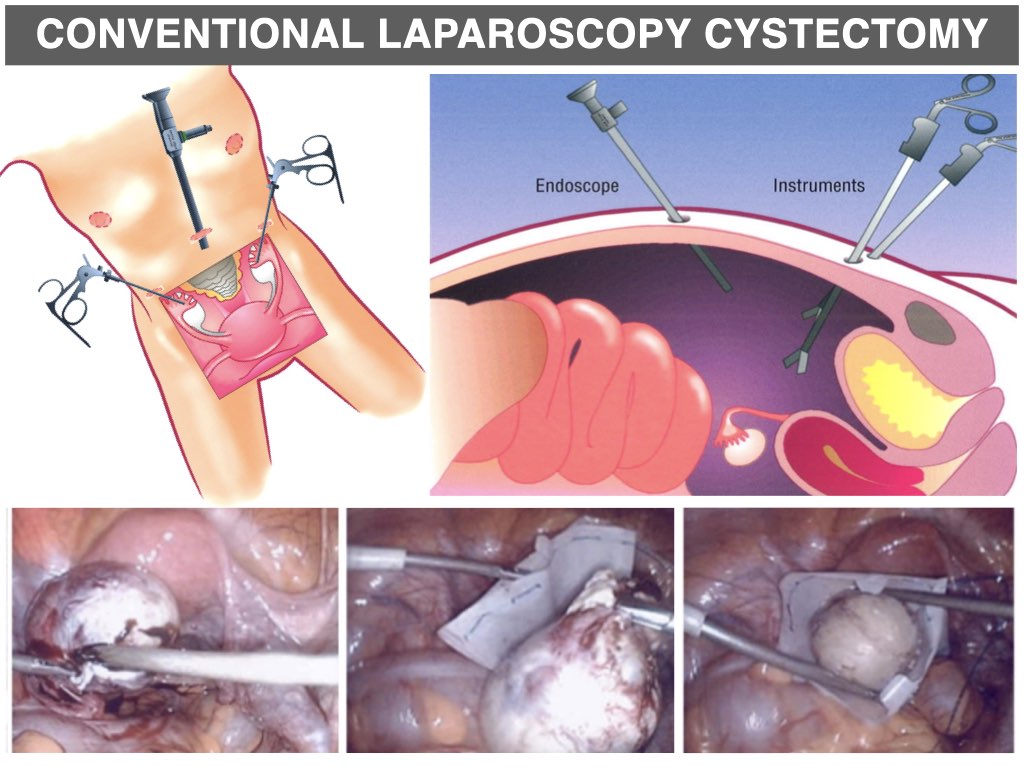
In selected cases, Single Incision Laparoscopy can be done with the cyst removed with Just One Cut.
Single Incision Laparoscopic Ovarian Cystectomy results in fewer abdominal cuts, fast recovery and almost scarless results.
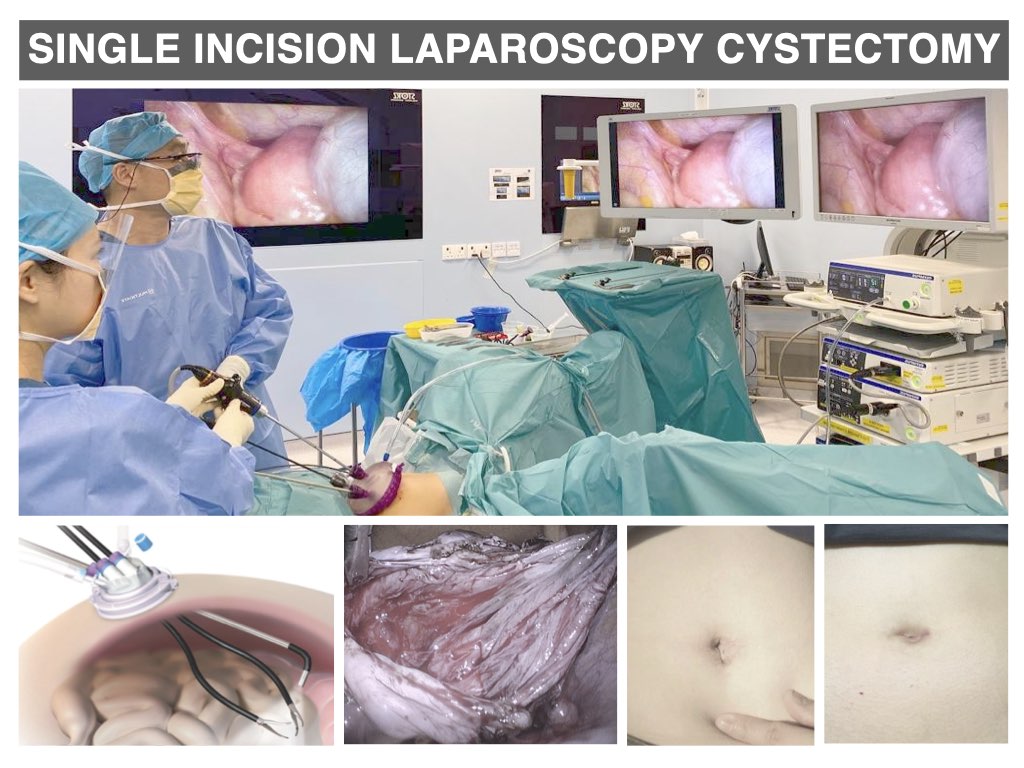
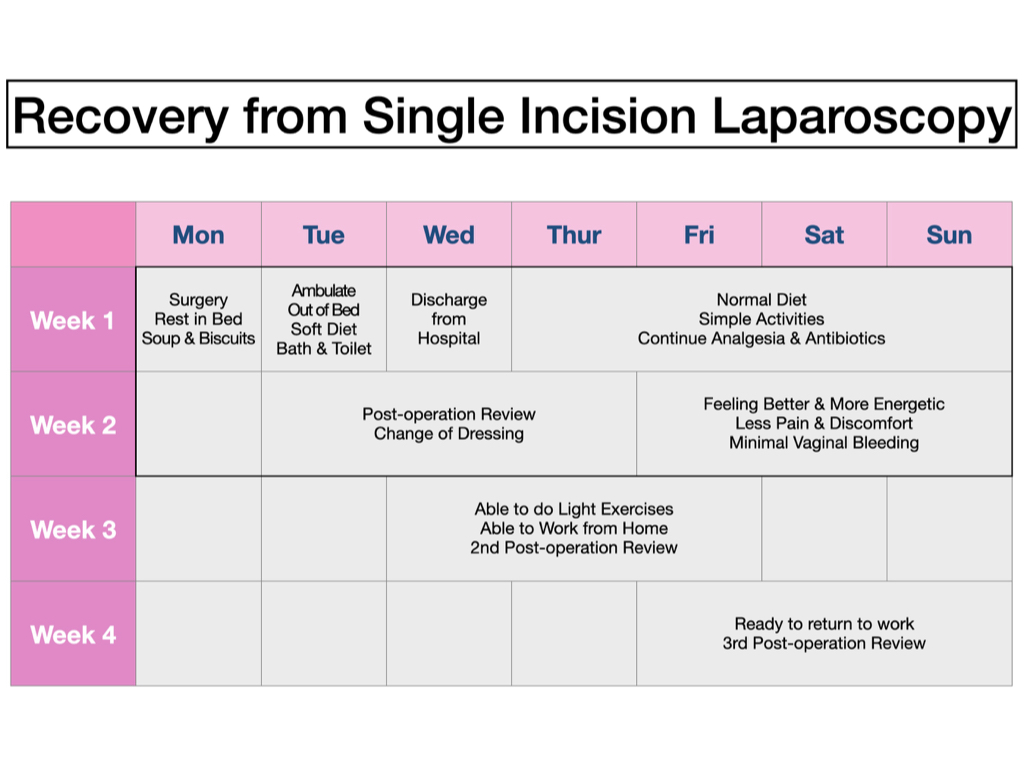
What is the risk of ovarian cancer?
❖ The lifetime risk of ovarian cancer in the general population is 1.3%.
❖ The risk is slightly increased with some ovarian cysts to 1.7 - 1.9%.
❖ The risk of cancer is increased with a positive family history of
. - 2 or more 1st degree relative with ovarian cancer
. - 1 relative with ovarian cancer and 1-2 relatives with breast cancer
. - 2-3 relatives with ovarian, endometrium, bowel, stomach, urinary tract cancer
❖ The risk is lowered with pregnancy, breastfeeding, taking oral contraceptive pill or fallopian tube removal.

CA125 CANNOT be used to Diagnose Ovarian Cancer
❖ CA125 can be raised in many normal conditions. It can also be normal in early ovarian cancer.
. It is not accurate for diagnosis of ovarian cancer.
❖ The Risk of Malignancy Index (RMI) uses CA125 and clinical features to assess the chance of ovarian cancer.
. It also cannot be used to diagnose ovarian cancer.
❖ The RMI Score is used to plan the detail treatment of the ovarian cyst.
